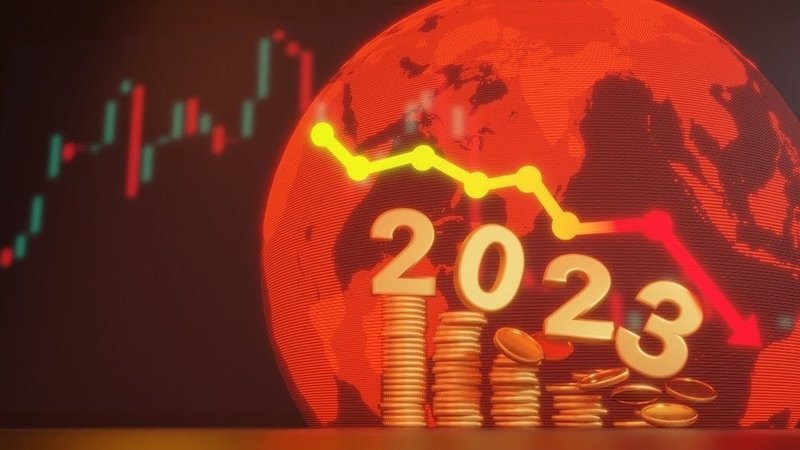Cover Story
The year in data: Low value M&A activity in 2023
The inflationary pressures and a risk-averse mindset of financiers resulted in a decrease in the deal values of M&As in 2023, writes Phalguni Deswal and Irena Maragkou.

The total value of the top 10 M&A deals completed in 2023 was $38.2bn, down by 54.7% compared to 2022 of $84.3bn. Image Credit: iSOMBOON / Shutterstock.
The inflationary pressures and high interest borrowing affected the medical device mergers and acquisitions (M&A) landscape in 2023 as the value of the top 10 deals shrunk compared to the previous year. Analysis done by the Medical Device Network team found that the total value of the top 10 M&A deals completed in 2023 was less than half of the previous year.
“There was a big uptick in M&A activity in 2021, followed by a sharp decrease in 2023, which can be attributed to the general economic downturn and companies exercising more caution” explains GlobalData medical device analyst Andrew Thompson. Adding, “areas such as in vitro diagnostics and healthcare information technology (IT) seemed to be more resilient.”
M&A deal value saw a steep decline
The total value of the top 10 M&A deals completed in 2023 was $38.2bn, down by 54.7% compared to 2022 of $84.3bn. The 2023 top 10 M&A deal value was comparable to 2019 and 2020 of $35.5bn and $32.9bn, respectively. For the analysis, the data included M&A deals that were completed in each year, regardless of the year of announcement.
The deal value for M&A deals was down significantly as well. The average deal value for the top 10 deals in 2023 was down by 54.8% from an average value of $8.4bn in 2022 to $3.8bn in 2023. Although inflation saw a sharp increase in 2022, a downturn in Medtech M&As started in late 2022. Thompson explained that the Medtech sector is late to feel the inflationary pressures, as hospitals only cut medical device funding after other cost-cutting measures such as downsizing. He also cautioned that the sector may also see a delay in recovery due to the delayed effect.
Most of the top 10 M&A deals each year were acquisitions, with only one merger making it into the top 10. In September, the musculoskeletal solutions company, Globus Medical merged with NuVasive, a spine technology company. The all-stock transaction was valued at approximately $3.1bn.
The top spot for the highest-value M&A was secured by primary care telehealth provider VillageMD’s acquisition of medical practice Summit Health, the parent company of urgent care clinic chain CityMD. The deal closed on 3 January and was valued at $8.9bn.
Another high-value M&A included the controversial $5.7bn acquisition of Abcam by Danaher. Jonathan Milner, former CEO, and founder of Abcam, took to LinkedIn to publicly voice his opposition to the sale. In November, Milner announced on his campaign website that he had decided to abandon his efforts after “extensive feedback from the majority of Abcam’s shareholders” that suggests they will vote in favour.
Thermo Fisher Scientific was on a buying streak in 2023. In January, the company acquired diagnostics company, The Binding Site Group in an all-cash transaction valued at £2.3bn ($2.8bn). In August, Thermo Fisher completed the acquisition of data intelligence company CorEvitas for $912.5m in cash. In October, Thermo Fisher announced a $3.1bn acquisition of proteomics solutions company Olink. Thermo Fisher paid $143m in upfront cash payment in addition to acquiring all of Olink’s shares. As of the end of business on 14 December, approximately 97.1% of Olink’s outstanding shares had been tendered by the company.
Partnerships instead of acquisitions
Thompson highlighted that due to the challenging economic climate companies have shifted to partnerships instead of acquisitions to develop and license devices and technologies. This is viewed by companies as a safer bet and the trend is most evident in digital healthcare, including healthcare IT and telehealth.
In October, Roche, Ibex Medical Analytics and Amazon Web Services (AWS) partnered to enable pathology laboratories to access Ibex’s AI-powered decision support tools to aid in the diagnosis of breast and prostate cancer through Roche’s navify Digital Pathology software platform, with the technology hosted on the AWS platform.
“Companion diagnostics prove how successful partnerships can be,” said Thompson. The use of companion diagnostic tests has contributed to the increased market for oncology tests from $1.9bn in 2022 to $3.1bn by 2030, as per GlobalData analysis. Last month, Foundation Medicine collaborated with Pierre Fabre Laboratories to develop companion diagnostics for the latter’s non-small cell lung cancer therapy.
This year also saw the end of the long-contested $8bn acquisition of cancer test manufacturer Grail by Illumina. The US-based genomic and molecular diagnostic company is expected to divest Grail in 2024. Both the US Federal Trade Commission and the European Commission opposed the deal stating that Illumina could leverage its position as one of the only companies equipped to process the tests, it would use the acquisition to prevent competition in the space.
Thompson stated that instrument companies like Illumina acquiring gene testing companies such as Grail to gain potential monopoly has been a point of concern for many years. Adding, an increase in the popularity of gene therapies and international regulatory agencies plan to regulate laboratory-developed tests (LDT) as medical devices can potentially act as a barrier to M&A activity in the sector.
AI is still a big trend
The increased demand on healthcare services along with investment from global health bodies has led to increased partnerships and M&A activity in the digital health space, especially healthcare IT and artificial intelligence (AI) says Thompson.
In recent months, big technology companies such as Google have partnered with medtech companies to develop healthcare technology. In August, Huma partnered with Google Cloud to streamline its disease-management digital product – a Software as Medical Device (SaMD) platform. The partnership aims to leverage Google’s generative AI platform to automate the generation of clinical summary reports from incoming data. In October, Google partnered with VertexAI to use its large language model system Med-PaLM 2 to allow clinicians to find answers to medical questions directly from a patient’s medical records.
Thompson noted that the use of AI will increase in the coming years as it is still an emerging area. However, he cautioned that AI is still a buzzword, and the industry will see some high-profile failures in the future. Thompson cited the case of Theranos, where a theoretically revolutionary diagnostic instrument failed to ultimately materialise. However, the saga had a silver lining as it highlighted the need for regulation around lab-developed tests.
Despite geopolitical turmoil and economic uncertainty in 2023, technology investment continued to grow significantly, underlining a common belief that the world’s greatest innovations have been born in times of great economic and political stress. With this in mind, Verdict looks at some of the top technology investment trends to watch in 2024.
Artificial intelligence
Artificial intelligence (AI) was the most talked about technology investment trend of 2023 and will continue to attract investment throughout the coming year. Research company GlobalData estimates the total AI market will be worth $908.7bn in 2030. In particular, the rapid adoption of generative AI (GenAI) throughout 2023 is set to continue and impact every industry. According GlobalData’s Thematic Intelligence 2024 TMT Predictions, the GenAI market will grow from $1.8bn in 2022 to $33bn by 2027, implying a spectacular compound annual growth rate (CAGR) of 80% during this period. Of the five advanced AI technologies, GlobalData cites GenAI as the fastest growing, accounting for 10.2% of the overall AI market by 2027.
Cloud computing
The cloud computing market will be worth $1.4trn by 2027, growing at a CAGR of 17% between 2022 and 2027, according to GlobalData forecasts. Software-as-a-service will continue to dominate, comprising 63% of cloud services revenue in 2023. Platform-as-a-service will be the fastest-growing cloud service growing at a CAGR of 21% between 2022 and 2027. Businesses will continue to outsource IT infrastructure to the cloud for cost reduction and greater flexibility. As well as its growing importance to enterprise operations, cloud computing will be a significant driver, coupled with AI, for emerging technologies such as robotics and IoT, which require continuous access to large swathes of data.
Cybersecurity
Rapidly increasing adoption of GenAI will increase the risk of social engineering attacks and employees will face a greater risk of spear-phishing attacks aimed at gaining access to an organisation’s systems through AI-powered social engineering, according to GlobalData’s Thematic Intelligence 2024 TMT Predictions. The coming year will place chief information security officers worldwide under extreme pressure as cyber-attacks become increasingly sophisticated against the backdrop of a widening cyber-skills gap. According to the EU’s Agency for Cybersecurity, the ransomware business model has grown exponentially in the past decade and is projected to cost businesses more than $10trn by 2025, up from $3trn in 2015. Addressing the challenge will require increased investment and GlobalData forecasts that cybersecurity revenues will reach $344bn worldwide by 2030.
Robotics
AI and cloud computing are both driving the development and adoption of the robotics industry. According to GlobalData forecasts, the global robotics market was valued at $63bn in 2022, and will grow at a CAGR of 17% to reach $218bn by 2030. The service robot market will reach $67.1bn by 2024, according to GlobalData, up 28% from 2023 and will be the biggest factor driving the growth of robotics in 2024, according to the research company. The drone market will play a key role with commercial drone delivery becoming more widespread in 2024. However, GlobalData expects the exoskeleton market to see the highest growth rate, followed by logistics. Exoskeletons are wearable mobile machines that allow for limb movement with increased strength and endurance. The main use cases are in healthcare, defence, and manufacturing.
Enterprise internet of things (IoT)
The global enterprise IoT market will generate $1.2trn in revenue by 2027, according to GlobalData. The enterprise IoT market comprises two key segments: Industrial Internet and smart cities. The industrial Internet refers to using connected sensors and actuators to control and monitor the industrial machinery environment, according to GlobalData. The Industrial Internet market will grow at a CAGR of 15.1%, from $374bn in 2022 to $756bn by 2027, according to GlobalData forecasts. Smart cities are urban areas that use connected sensors to enhance the quality and performance of urban services such as energy, transport, and utilities. The smart cities market is expected to grow from $234bn in 2022 to $470bn by 2027 at a CAGR of 15%.

Caption: The US Pentagon is seeking to reduce carbon emissions through a range of programmes, but will it go far enough? Credit: US DoD
Australia could be one of the main beneficiaries of this dramatic increase in demand, where private companies and local governments alike are eager to expand the country’s nascent rare earths production. In 2021, Australia produced the fourth-most rare earths in the world. It’s total annual production of 19,958 tonnes remains significantly less than the mammoth 152,407 tonnes produced by China, but a dramatic improvement over the 1,995 tonnes produced domestically in 2011.
The dominance of China in the rare earths space has also encouraged other countries, notably the US, to look further afield for rare earth deposits to diversify their supply of the increasingly vital minerals. With the US eager to ringfence rare earth production within its allies as part of the Inflation Reduction Act, including potentially allowing the Department of Defense to invest in Australian rare earths, there could be an unexpected windfall for Australian rare earths producers.
The mine’s concentrator can produce around 240,000 tonnes of ore, including around 26,500 tonnes of rare earth oxides.
Gavin John Lockyer, CEO of Arafura Resources
Total annual production

$345m: Lynas Rare Earth's planned investment into Mount Weld.

Caption. Credit:

Phillip Day. Credit: Scotgold Resources